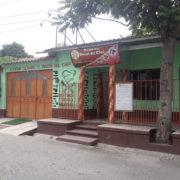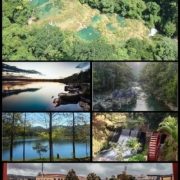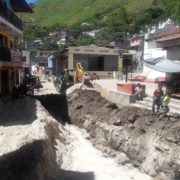Guatemala Mayan Population 39.8% are Indigenous 23 Mayan groups
Guatemala Mayan Population approximately 39.8% of the population is Indigenous and consist of 23 Maya groups and one non-Mayan group. These are divided as follows: (K’iche 9.1%, 8.4% Kaqchikel, Mam 7.9%, 6.3% Q’eqchi’, other Mayan peoples 8.6%, 0.2% indigenous non-Mayan). They live all over the country, especially in the highlands.
The Mayan people of the Highlands of Guatemala have a rich and distinctive culture from the long mix of elements from Spain and the native Mayan people. This diverse history and the natural beauty of the land have created a destination rich in interesting and scenic sites.
The Maya people of the Guatemala highlands include the Achi, Akatek, Chuj, Ixil, , Kaqchikel, K’iche’, Mam, Poqomam, Poqomchi’, Q’anjob’al, Q’eqchi’, Tz’utujil and Uspantek.
The largest populations of contemporary Maya inhabit Guatemala, Belize, and the western portions of Honduras and El Salvador, as well as large segments of population within the Mexican states of Yucatán, Campeche, Quintana Roo, Tabasco, and Chiapas.
Spanish is the official language of Guatemala. As a first and second language, Spanish is spoken by 93% of the population. Guatemalan Spanish is the local variant of the Spanish language.
Twenty-one Mayan languages are spoken, especially in rural areas, as well as two non-Mayan Amerindian languages, Xinca, an indigenous language, and Garifuna, an Arawakan language spoken on the Caribbean coast. According to the Language Law of 2003, the languages of Mayas, Xincas, and Garifunas are unrecognized as National Languages.
The Achi are a Maya people in Guatemala. Their indigenous language is also called Achi and is closely related to K’iche’. One of the first references to Cubulco can be found in the Royal Charter of don Francisco Izquin Nehabib, written in 1558. The Rabinal Achí was published in Paris in 1862. It is estimated that 105,992 Achi remain in Guatemala today.
Achi traditions are passed from generation to generation. Ceremonies are performed as part of brotherhoods, and the duty of brothers to maintain ongoing traditions. They perform several dances. Their deities include Ajaaw (the divine), uk’u’x kaaj and uk’u’x uleew, to which they ask for permission to perform the traditional dances. The rain, wind, clouds and corn are also considered sacred beings. The people also celebrate Easter week, Christmas and Christmas Eve. Achi religion is a syncretic version of a Christianism-animism complex.
Textiles are an important part of Achi culture, weaving is done the same way as Ixchel, which is using a waist loom or sticks. In this way, bands, servilletes, and table cloths are produced. The fabric used is “ixkak”, which is cotton dyed in white and coffee colour. The cotton is obtained at the end of winter, and is called “mish”.
The Akatek (Akateko) are a Maya people in Guatemala. Their indigenous language, which is also called Akatek, belongs to the Q’anjobalan branch of Mayan languages. Most Akatek live in San Miguel Acatán and San Rafael La Independencia, in the department of Huehuetenango. The estimates curretn population is 39,370.
The Chuj or Chuh are a Maya people, whose homeland is in Guatemala and Mexico. Population estimates vary between 30,000 and over 60,000. Their indigenous language is also called Chuj and belongs to the Q’anjobalan branch of Mayan languages. In Guatemala, most Chuj live in the department of Huehuetenango in the municipalities of San Mateo Ixtatán and San Sebastián Coatán.
The Ixil are a Maya people indigenous to Guatemala. The Ixil live in three municipalities in the Cuchumatanes mountains in the northern part of the department El Quiché. These municipalities, also known as the Ixil Triangle, are Santa Maria Nebaj, San Gaspar Chajul, and San Juan Cotzal.
In the early eighties, the Ixil Community was one of the principal targets of a genocide operation, involving systematic rape, forced displacements and hunger during the Guatemalan civil war. In May 2013 Efraín Ríos Montt was found guilty by a Guatemala court of having ordered the deaths of 1,771 Ixil people. There are 95,315 Ixil in Guatemala.
The Kaqchikel (also called Kachiquel are one of the indigenous Maya peoples of the midwestern highlands in Guatemala. The name was formerly spelled in various other ways, including Cakchiquel, Cakchiquel, Kakchiquel, Caqchikel, and Cachiquel.
The Kaqchikel language, one of the Mayan languages, is spoken today by 400,000 people. They subsist agriculturally, and their culture reflects a fusion of Maya and Spanish influences. In November 1920, Cameron Townsend attended a gathering of politicians and diplomats from various Central American countries, after which he desired to began the difficult process of writing down the Kapchikel language and thereby to translate the Bible into their native language. Today 832,968 reside in Guatemala.
The Mam are an indigenous people in the western highlands of Guatemala and in south-western Mexico who speak the Mam language. Many Mam live in and around the nearby modern city of Huehuetenango. The city of Quetzaltenango or Xela was originally Mam. Many more Mam live in small hamlets in the mountains of northern Guatemala, keeping many of their native traditions. Many Mam are bilingual and speak both Spanish as well as the Mam language, part of the Maya language family, the latter typically as their first language. The Mam Population is 640,000.
Poqomam is a Mayan language, closely related to Poqomchi’. It is spoken by 50,000 or so people in several small pockets in Guatemala, the largest of which is in Jalapa department.
May 2003, the Guatemala congress passed the “Law of National Languages” that, while it states that Spanish is the official language of Guatemala, the Law recognizes that indigenous languages are essential parts of the national identity which must be promoted. This is a considerable change from the Guatemalan Constitution, which only recognizes indigenous languages as a part of the “national patrimony.”
The Poqomchi’ are a Maya people in Guatemala. Their indigenous language is also called Poqomchi’, and is related to the Quichean–Poqom branch. Poqomchí is spoken in Baja Verapaz (Purulhá) and in Alta Verapaz: Santa Cruz Verapaz, San Cristóbal Verapaz, Tactic, Tamahú and Tucurú. It is also spoken in Chicamán (El Quiché).
Poqomchi’ is a Mayan language spoken by the Poqomchi’ Maya of Guatemala, and is very closely related to Poqomam. Its two main dialects, eastern and western, were spoken by 90,000 or so people in the year 2000, in Purulhá, Baja Verapaz, and in the following municipalities of Alta Verapaz: Santa Cruz Verapaz, San Cristóbal Verapaz, Tactic, Tamahú and Tucurú. It is also the predominant language in the municipality of Chicamán (El Quiché), which borders Alta Verapaz.
Q’anjob’al (also Kanjobal) is a Mayan language spoken primarily in Guatemala and part of Mexico. According to 1998 estimates compiled by SIL International in Ethnologue, there were approximately 77,700 native speakers, primarily in the Huehuetenango Department of Guatemala. Municipalities where the Q’anjob’al language is spoken include San Juan Ixcoy (Yich K’ox), San Pedro Soloma (Tz’uluma’ ), Santa Eulalia (Jolom Konob’ ), Santa Cruz Barillas (Yalmotx), San Rafael La Independencia, and San Miguel Acatán (Pedro Mateo Pedro 2010). Q’anjob’al is taught in public schools through Guatemala’s intercultural bilingual education programs.
Q’eqchi’ (/qʼeqt͡ʃiʔ/) (K’ekchi’ in the former orthography, or simply Kekchi in many English-language contexts, such as in Belize) are one of the Maya peoples in Guatemala and Belize, whose indigenous language is also called Q’eqchi’.
Before the beginning of the Spanish conquest of Guatemala in the 1520s, Q’eqchi’ settlements were concentrated in what are now the departments of Alta Verapaz and Baja Verapaz. Over the course of the succeeding centuries a series of land displacements, resettlements, persecutions and migrations resulted in a wider dispersal of Q’eqchi’ communities into other regions of Guatemala (Izabal, Petén, El Quiché), southern Belize (Toledo District), and smaller numbers in southern Mexico (Chiapas, Campeche). While most notably present in northern Alta Verapaz and southern Petén, contemporary Q’eqchi’ language-speakers are the most widely spread geographically of all Maya peoples in Guatemala.
The Tz’utujil (Tzutujil, Tzutuhil, Sutujil) are a Native American people, one of the 21 Maya ethnic groups that dwell in Guatemala. Together with the Xinca, Garífunas (Black Caribs) and the Ladinos, they make up the 24 ethnic groups in this relatively small country. Approximately 100,000 Tz’utujil live in the area around Lake Atitlán. Their pre-Columbian capital, near Santiago Atitlán, was Chuitinamit. In pre-Columbian times, the Tz’utujil nation was a part of the ancient Maya civilization.
The Tz’utujil are noted for their continuing adherence to traditional cultural and religious practices. Evangelical Protestantism and Roman Catholicism are also practiced among them. They speak the Tz’utujil language, a member of the Mayan language family.
The Uspanteko (Uspanteco, Uspanteko, Uspantec) is a Mayan language of Guatemala, closely related to K’iche’. It is spoken in the Uspantán and Playa Grande Ixcán municipios, in the Department El Quiché. It is also one of only three Mayan languages to have developed contrastive tone (the others being Yukatek and one dialect of Tzotzil). It distinguishes between vowels with high tone and vowels with low tone. Uspantek has two phonemic tones: high and falling (Can Pixabaj 2007:39). In writing, the high tone is represented by an acute accent mark on the vowel (ráqan ‘my foot’), and the falling tone is represented by an acute accent mark on the first vowel followed by an unmarked vowel (júun ‘one’). The high tone occurs in penultimate syllables when the final syllable contains a short vowel
Garifuna (Karif) is a minority language widely spoken in villages of Garifuna people in the western part of the northern coast of Central America.
It is a member of the Arawakan languages family but an atypical one since it is spoken outside of the Arawakan language area, which is otherwise confined to the northern parts of South America, and because it contains an unusually high number of loanwords, from both Carib languages and a number of European languages because of an extremely tumultuous past involving warfare, migration and colonization.
The Ch’orti’ language (sometimes also Chorti) is a Mayan language, spoken by the indigenous Maya people who are also known as the Ch’orti’ or Ch’orti’ Maya. Ch’orti’ is a direct descendant of the Classic Maya language in which many of the pre-Columbian inscriptions using the Maya script were written. This Classic Maya language is also attested in a number of inscriptions made in regions whose inhabitants most likely spoke a different Mayan language variant, including the ancestor of Yukatek Maya. Ch’orti’ is the modern version of the ancient Mayan language Ch’olan (which was actively used and most popular between the years of A.D 250 and 850).
Official 2012 statistics indicate that approximately 60.2% of the population is “non-indigenous referring to the mestizo population and the people of European origin. These people are called Ladino in Guatemala. Other racial groups include numbers of Afro-Guatemalans, Afro-Mestizos, and Garifuna of mixed African and indigenous Caribbean origins who live in the country’s eastern end. Some Garifunas live mainly in Livingston, San Vicente and Puerto Barrios. They descend mainly from the Arawaks and Belizean Creoles.
Tourism became one of the main drivers of the economy, an industry that reported more than $1.8 billion in 2008. Guatemala received about two million tourists annually.
In recent years it has led to the visit of many cruise ships that touch important seaports in Guatemala, leading to more tourists visiting the country.
In its territory there are fascinating Mayan archaeological sites (Tikal in the Petén, Quiriguá in Izabal, Iximche in Tecpan, Chimaltenango, and in the City of Guatemala). Destinations of natural beauty as Lake Atitlán and Semuc Champey. As historical tourism is the colonial city of Antigua Guatemala, which is recognized by UNESCO Cultural Heritage.
Maya textiles are the clothing and other textile arts of the Maya peoples, indigenous peoples of the Yucatán Peninsula in Mexico, Guatemala, Honduras, El Salvador and Belize. Women have traditionally created textiles in Maya society, and textiles were a significant form of ancient Maya art and religious beliefs.
Ancient Maya women had two natural types of cotton to work with, one white and the other light brown,called coruscate, both of which were commonly dyed. The preparation of cotton for spinning was very burdensome, as it had to be washed and picked clean of seeds.
Elite women were also given the opportunity to work with the most expensive feathers and pearl beads. However, women of the elite not only had to prepare the best clothing for their families, but they also had to be talented in weaving tapestry, brocade, embroidery, and tie-dyeing for tribute to other families and rulers. Weavers had three different natural dyes to work with. Women also worked with maguey. Maguey was of major value as a cordage material used for horse gear, nets, hammocks and bags.
Huipil [ˈwipil] (from the Nahuatl word huīpīlli [wiːˈpiːlːi]) is the most common traditional garment worn by indigenous women from central Mexico to Central America.
It is a loose-fitting tunic, generally made from two or three rectangular pieces of fabric which are then joined together with stitching, ribbons or fabric strips, with an opening for the head and, if the sides are sewn, openings for the arms. Traditional huipils, especially ceremonial ones, are usually made with fabric woven on a backstrap loom and are heavily decorated with designs woven into the fabric, embroidery, ribbons, lace and more. However, some huipils are also made from commercial fabric.
Ancient Maya cuisine was varied and extensive. Many different types of resources were consumed, including maritime, flora, and faunal material, and food was obtained or produced through a host of strategies, such as hunting, foraging, and large-scale agricultural production. Plant domestication focused on several core foods, the most important of which was maize.
Much of the Maya food supply was grown in agricultural fields and forest gardens, known as pet kot.The system takes its name from the low wall of stones (pet meaning “circular” and kot “wall of loose stones”) that characteristically surrounds the gardens.
The households in Maya civilization consisted of extended families living near each other and sharing common spaces. The nuclear family each had personal homes. The shared areas would sometimes include a garden, kitchen area, storage area and manufacturing area. The amount of shared buildings in a household depended on how many families were living there, how large the nuclear homes were, and what the occupations of that family included.
Women spent the majority of time at the house with children, while the men had to go hunting and provide for the family. The women were in charge of gardening and would teach their daughters as they grew older. When a young man was old enough to marry he would leave his parents’ house. He would then build a new house near his father’s house and once he had a wife they would live there together and raise children.
The shape of the houses were the same for both main classes. The differences were the size of the houses and the materials used to build the houses. They would either be oblong or rectangular in shape
Although the Maya were once thought to have been peaceful (see below), current theories emphasize the role of inter-polity warfare as a factor in the development and perpetuation of Maya society. The goals and motives of warfare in Maya culture are not thoroughly understood, but scholars have developed models for Maya warfare based on several lines of evidence, including fortified defenses around structure complexes, artistic and epigraphic depictions of war, and the presence weapons such as obsidian blades and projectile points in the archaeological record. Warfare can also be identified from archaeological remains that suggest a rapid and drastic break in a fundamental pattern due to violence.



 Ethical Fashion Guatemala
Ethical Fashion Guatemala  Lake Atiltan Travel Services
Lake Atiltan Travel Services 
 Guatemala Travel Services
Guatemala Travel Services  Lake Atitlan Tours
Lake Atitlan Tours 
